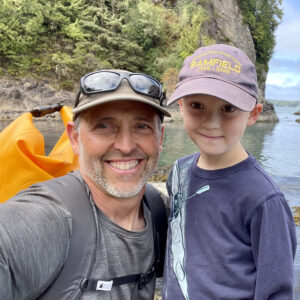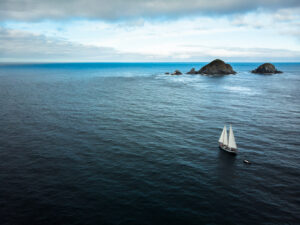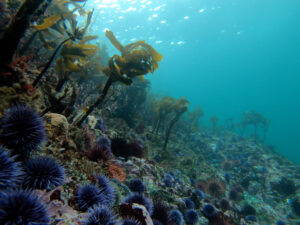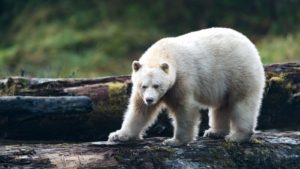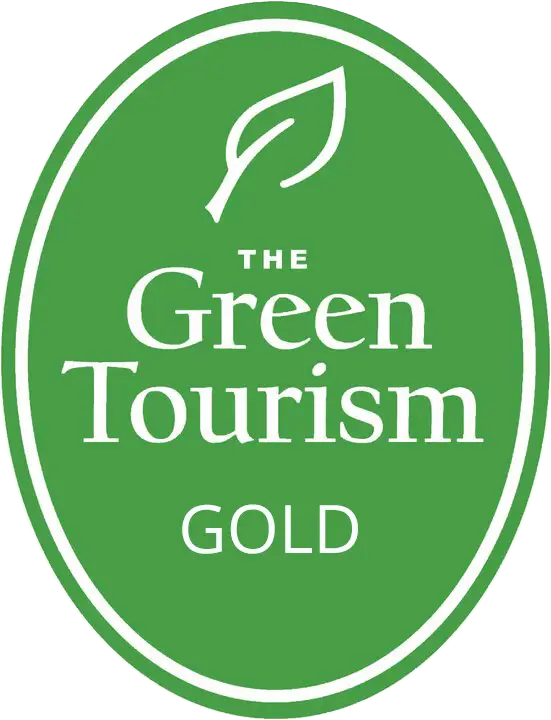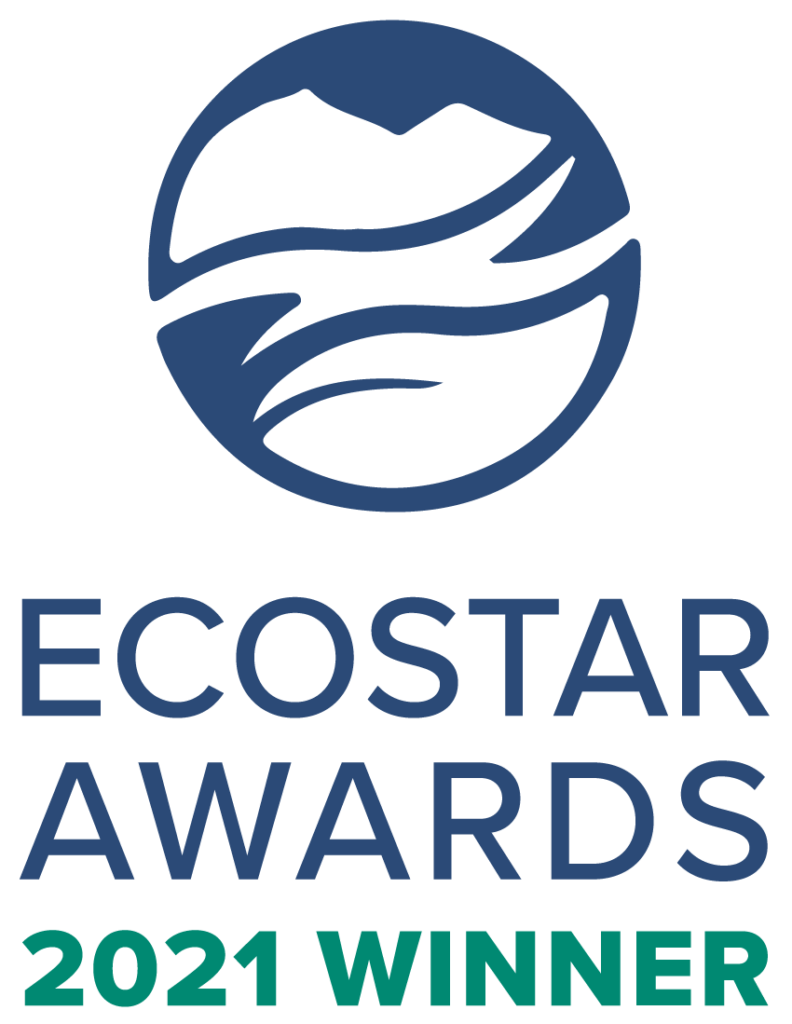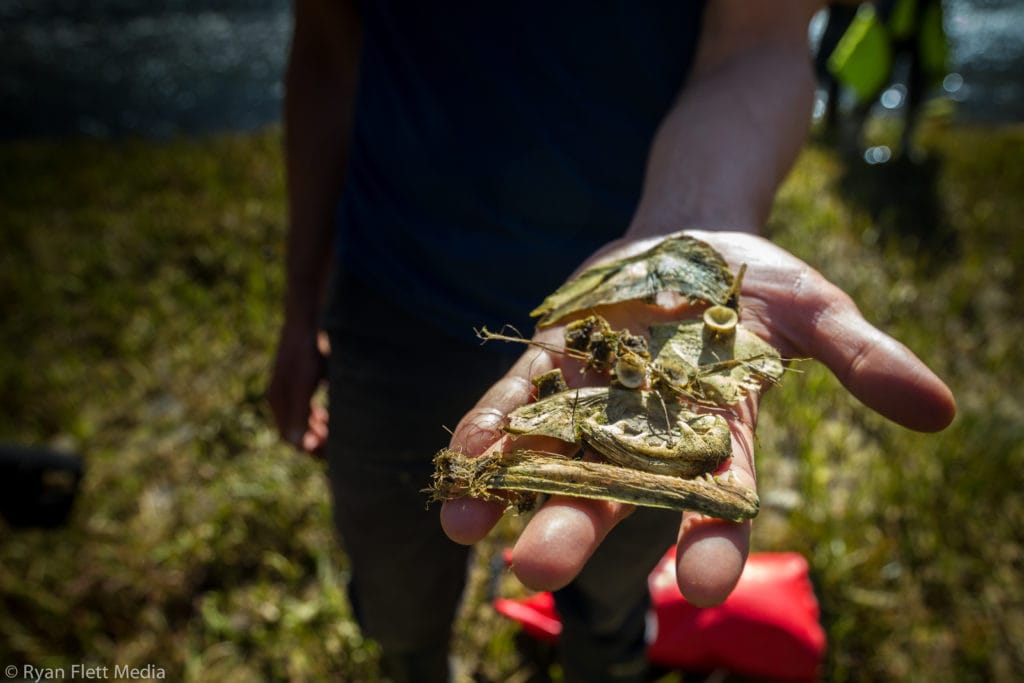
Salmon Forest: Part 1
As we stepped into the grove of giant, moss-laden Sitka spruce and Western Red cedar, we could barely hear ourselves over the torrential rain, roar of the adjacent river, and the stereophonic screeches, cackles, and squawks of gulls, eagles, and ravens. The air was filled with the rich organic smells of coastal temperate rainforest, and the stench of rotting flesh. Everywhere we turned we found the partially eaten and decaying remains of salmon, and some actively being skeletonized by oozing swarms of fly larvae (yes, maggots). We had walked into one of the most remarkable, complex, and critical webs of ecological interactions occurring in the ancient coastal temperate rainforests of the Pacific Northwest – the Salmon Forest.
Pacific salmon (Oncorhynchus spp.) are an anadromous fish, meaning that they are born in fresh water, spend the majority of their lives in the ocean, and return to the same streams and rivers where they were born to spawn. Most of the seven species of Pacific salmon spend four years in the ocean before returning to spawn, but pink salmon return after just two years. And, with the exception of steelhead salmon (which can spawn up to three times), spawning is followed by death.
Each year, as millions of Pacific salmon migrate back to where they were born, they bring with them the millions of kilograms of carbon and nitrogen they’ve accumulated in their bodies during their years in the marine environment. This point bears repeating. Each year, as salmon return to their natal streams and rivers, millions of kilograms of carbon and nitrogen that came from the ocean are being transported (in the form of adult salmon) to freshwater and adjacent forest ecosystems, with widespread ecological consequences.
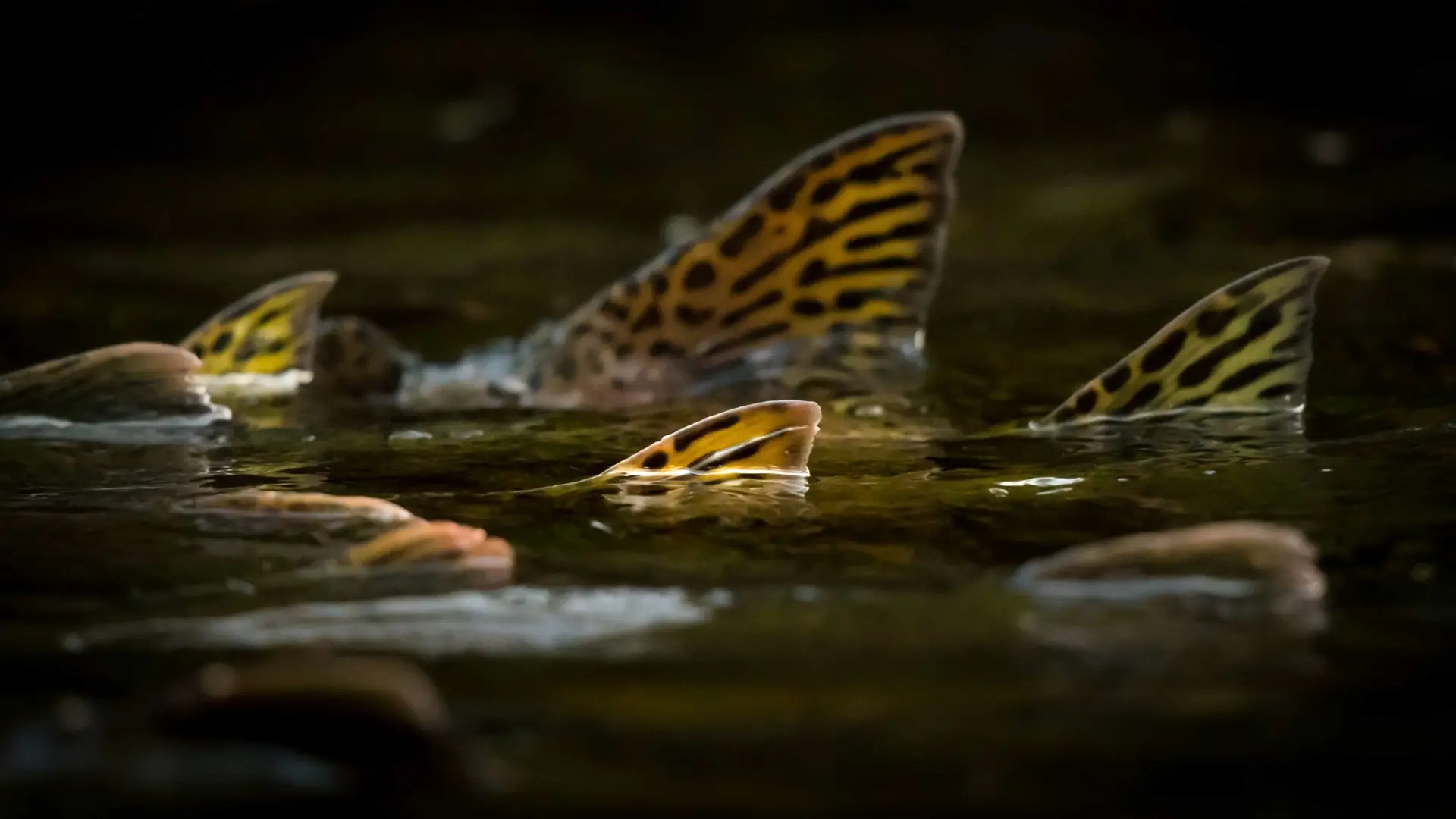
Part 1 of the Salmon Forest story describes how salmon are transported from streams and river into the forests that extend inland away from the riverbanks, known as riparian forests.
When salmon arrive at their natal streams, not all manage to make it to their final destination. These less fortunate play a different role: food for terrestrial predators. In particular, bears eat salmon, but this classic predator-prey relationship is much more complicated than you may think and plays a pivotal role in the ecosystem.
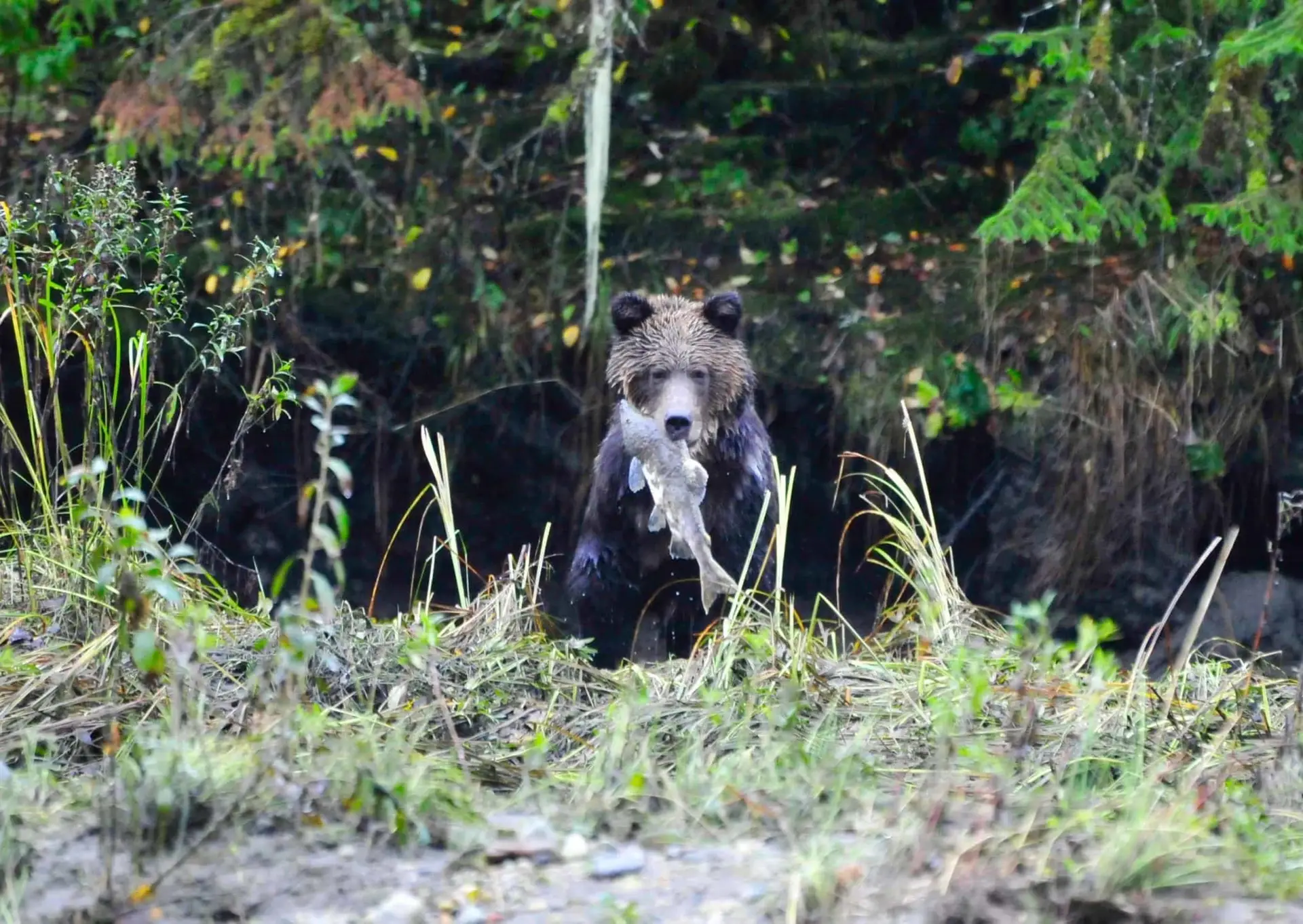
Bears (and to a lesser extent other salmon-eating animals such as wolves, eagles, otters, and even wolverines), catch, consume, and spread partially eaten salmon carcasses, as well as salmon-enriched urine and feces, throughout riparian forests. And this is what we witnessed on the day in question – dozens of salmon carcasses deposited on the forest floor, by grizzly bears, black bears, and wolves.
At this point you may be asking yourself “why don’t the bears eat the whole fish instead of leaving much of it behind to rot?” Good question!
The short answer is that since salmon-spawning seasons typically only last between 45 and 60 days, bears have a limited time to pack on as much weight as possible to support themselves during winter hibernation. For this reason, bears have to make very good decisions about what they eat. When it comes to salmon, some body parts are nutritionally better than others, and the bears know it.
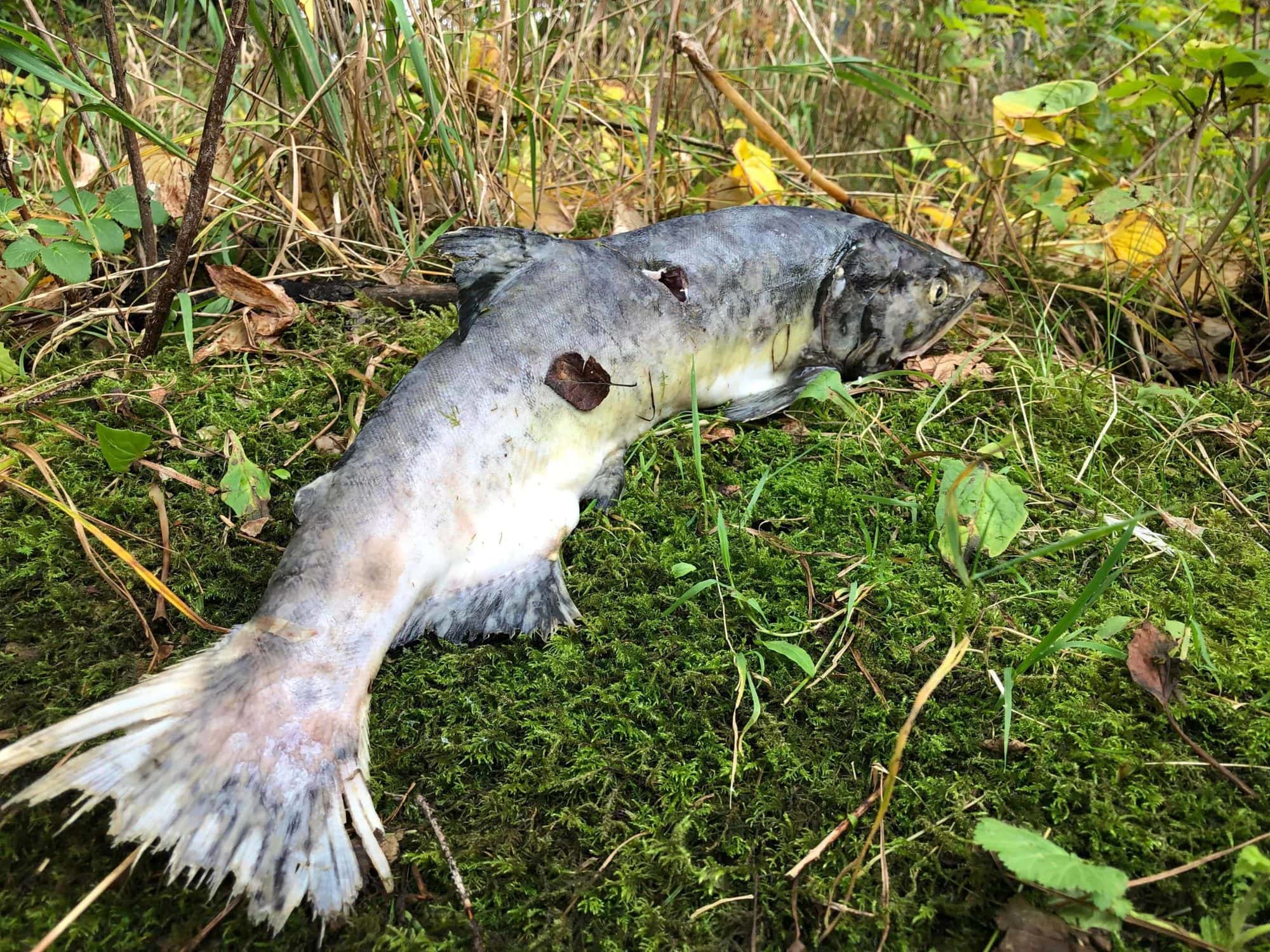
As a great example of this, Dr. Tom Reimchen at the University of Victoria studied black bears feeding on salmon in a small coastal stream in Haida Gwaii and made the following observations. First, he found that, on average, the eight bears in this system consumed ~13 salmon per day; and, over the 45 day spawning season Reimchen estimated that each bear consumed ~945 kg of salmon. Impressive!
Reimchen also found that the bears typically ate only ~50% of each fish before abandoning it on the forest floor. Importantly, the bears preferred to eat fat-rich salmon tissues (brain, female egg masses, and dorsal musculature) and abandoned the viscera (guts), testes, and bony remnants such as jaws. He also found that bears preferred to consume larger salmon, which tended to be males. However, Reimchen observed that bears occasionally capture but then abandon salmon without consuming any tissues at all. This tended to happen in pools below waterfalls where bears had easy access to pre-spawn salmon. That is, bears were actively selecting for large males and females that still had eggs, and intentionally releasing small males and spawned-out females.
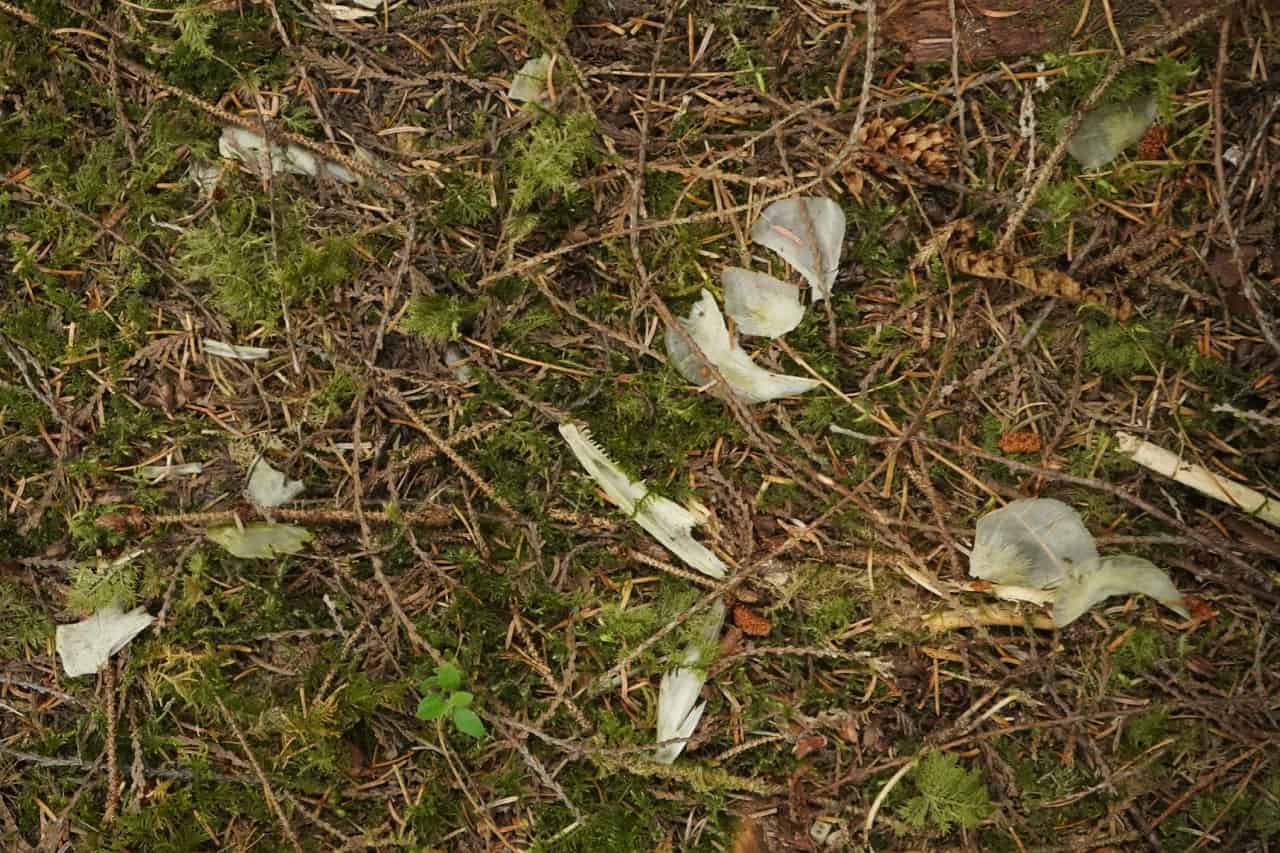
Imagine watching a bear catch a salmon, inspect it, and then simply discard it. The ecological interpretation of this behaviour is that when salmon are super-abundant during spawning season, bears can afford to be very selective about which salmon they eat (i.e. large vs. small and pre-spawn vs. post-spawn), and which body parts they eat (i.e. high vs. low fat content), in order to maximize both caloric intake and weight gain in the limited time they have available.
The implications of this selective foraging behaviour are wide reaching, affecting bear reproductive success and population dynamics, and in times of low salmon abundance, can lead to bears being much less selective and females having fewer or even no cubs. However, from an ecosystem ecology perspective the real question here is: what’s the effect of all those salmon nutrients (and bear excrement) being spread throughout riparian forests? Does adding salmon nutrients boost growth rates of trees and shrubs, and if so, what are the downstream (indirect) effects of that?
We’ll tackle these questions in my next post, Salmon Forest – Part 2.
References:
Reimchen T.E (2000) Some ecological, and evolutionary aspects of bear-salmon interactions in coastal British Columbia. Canadian Journal of Zoology 78:448–457.

